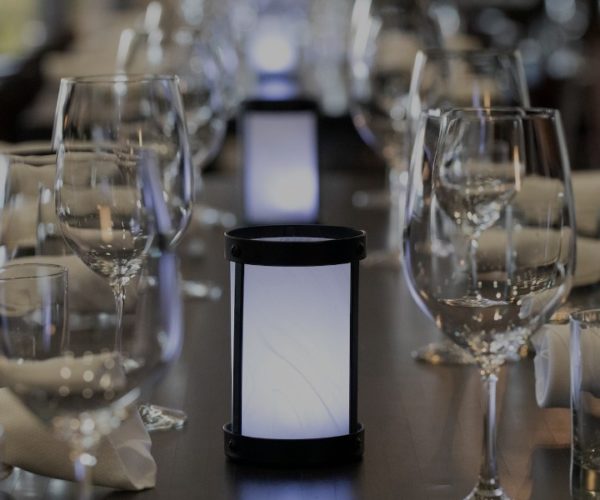Italian food isn’t only popular in America; it’s a worldwide favorite. According to the European Food Agency, Italian food exports reached an all-time high in 2021.
This represents an annual increase of 11.2%, highlighting the growing popularity of traditional Italian cuisine.
America was the second-biggest fan of Italian food, wine, and fresh produce, with increased demand of over 18%. Some reasons behind this upswing are favorable trade terms between these two nations, but it’s got a lot to do with our love of Italian cuisine, too.
If you’d like to discover what all the fuss is about, all it takes is a trip to Las Vegas. Keep reading to find out where you should start your love affair with Italian food.
What Is Traditional Italian Cuisine?
The greasy, over-processed, doughy creations served in some modern-day Italian restaurants are poor substitutes for authentic Italian foods. True Italian food is one of the Mediterranean traditional cuisines known for its health benefits.
These foods focus on simplicity and making the most of a few simple ingredients.
Despite the lack of content, these dishes burst with a flavor borne of using fresh ingredients, with herbs and spices bringing out their true potential.
Try these classics to experience the real tastes of Italy:
1. Pasta e Fagioli
This is one of the oldest types of pasta served in Italian eateries today, dating back to the Roman Empire.
Pasta e Fagioli is a soup typically served after the salad and antipasto courses. It’s essentially a dish that stems from a reluctance to waste food.
Back in the day, farmers would gather to celebrate the annual slaughtering of pigs for processing into food. They called this gathering the feast of Sant’Antonio Abate.
At this time, workers would set aside all the prime cuts of the animals for sale to the wealthy. They reserved the less desirable trotters and rinds for their families.
They either smoked these parts for later use or cooked them up into Pasta e Fagioli to enjoy with their friends.
This favorite festival dish contained slivers of pig meat, potatoes, black-eyed peas, rosemary, and bay leaves. The pasta component traditionally comprised Maltagliati or broken Pappardelle pasta.
Maltagliati is an egg-based irregularly-shaped pasta made from the remnants left over after making tagliatelle.
While some purists insist on making this dish the traditional way, most authentic Italian chefs now opt for prime cuts of pork like pancetta and prosciutto crudo instead.
It’s accepted practice to use Borlotti or Cannellini beans and small pasta shapes instead of Maltagliati, too.
2. Gnocchi Al Pistachio Siciliano
Gnocchi is another perennial favorite Italian dish. It’s a classic example of the simplicity that’s central to Italian cuisine. In the simplest terms, gnocchi is a type of potato dumpling that goes well with a huge variety of other ingredients and sauces.
This dish also hails back to Roman times and was a favorite among Roman legionaries who took it with them as they marched across Europe. As far as they went, peasants adopted this easy-to-make, affordable dish, adding their touches along the way.
Initially, the gnocchi comprised simple squash and breadcrumbs. Potato gnocchi only truly came to the fore in the 16th century, when potatoes became widespread in Europe.
Northern Italian villagers were the first to mold the recipe into its present form. They used starchy potatoes to create the light, airy dough that’s best for gnocchi.
These original creations evolved into three main types of gnocchi, namely:
- Gnocchi Alla Romana made from Semolina
- Gnocchi Parisienne, a French interpretation of gnocchi
- Gnocchi di Patate, a universal favorite
Gnocchi di Patate
This is gnocchi, as we all know and love it. It’s made from mashed potatoes combined with egg and flour to create a dough. Chefs then roll the dough into ropes and slice them into pillow shapes.
They’re dropped straight into boiling water and scooped up when they float to the top. The final touch is pan-searing the gnocchi with the sauce of your choice.
These mild-flavored gnocchi suit a huge range of accompaniments. You can enjoy them with cream sauce, marinara, or a simple mix of olive oil and herbs.
Gnocchi Al Pistachio Siciliano is one of the best ways to enjoy potato gnocchi. It comprises a delicious combination of Mortadella, pistachio pesto, and Parmigiano Reggiano.
This dish is a regular feature on Ferraro’s spring menu, perfectly capturing the essence of the fresh new season.
3. Tiramisu
Tiramisu dates back to 1800 and has rather dubious origins. According to legend, a wily Treviso “Maitresse” invented this dessert as a pick-me-up for clients at her house of ill repute.
She offered this supposedly aphrodisiac dessert to clients at the end of the evening, hoping to coax more business out of them for the night or keep them out of trouble with their wives. So far, no one’s disputed this rather colorful tale of Tiramisu’s origins, and it makes for interesting dinner conversation, too.
There’s no denying that tiramisu is a delicious dessert, and restaurants and home chefs alike soon adopted versions of this recipe. At first, Tiramisu was unknown outside Treviso as it doesn’t keep overnight without refrigeration.
The advent of electricity meant that the dessert’s fame spread far and wide. It soon became a best-selling feature on most authentic Italian menus.
While the original comprised home-baked sponge biscuits with mascarpone cheese, and espresso, even the most authentic Italian chefs use store-bought ladyfingers in their creations these days.
No Italian feast is complete without this popular dessert to wind up your meal courses.
Discover Italian Fine Dining in Las Vegas
Ferraros specializes in authentic Italian food made by our family, especially for you, and we’ve been around since 1985 practicing our art.
All our meals contain seasonally sourced, fresh ingredients perfectly suited to each dish. We have a wide range of fine wines to match our carefully crafted Southern Italian creations, too.
Book a table to experience the joys of traditional Italian cuisine during your Vegas vacation.



